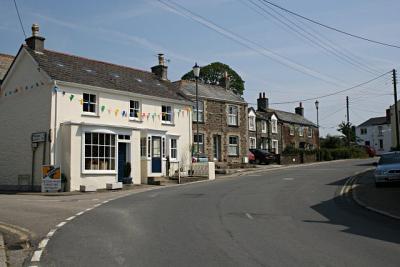


Web: www.facebook.com/groups/ProbusCornwall
Village of tall stories
Probus is famous for having the tallest church tower in Cornwall. The tower is 129 feet high, and richly decorated with carvings. The place name originates from the church's dedication to Saint Probus. The village sits roughly midway between St. Austell and Truro, just north of the A390 road which used to pass through the village but now a by-pass carries it south of the village. The parish population at the 2011 census was 2,299.
There was a monastery here before the Norman Conquest which continued to exist until the reign of Henry I. King Henry gave the church of Probus to Exeter Cathedral and the clergy of Probus thereafter were a dean and five canons (the deanery was abolished in 1268 and the canonries in 1549). The first vicar was instituted in 1312; the parish had dependent chapelries at Cornelly and Merther. The church was built mainly in the 15th century but the tower was still under construction in 1523. In the church is the brass of John Wulvedon and his wife, 1512. In the early years of the 19th century the rare custom of turning to the East for the Doxology at the conclusion of the recitation of each Psalm, particularly by those in choir, was observed in Probus church.
There are records of no less than nine medieval chapels in the parish and three more of which traditions exist. Two mansions formerly existed at Golden: one of the Wolvedon family and a larger one of the Tregians. The line of Wolvedons became extinct in 1514. At the Tregian mansion the Catholic martyr Cuthbert Mayne was arrested in June 1577. The farmhouse at Golden contains the remains of a hall-house of the late 1530's, reconstructed about a century later, and extended in the 18th century. There is also a fine barn with original roof timbers and a first floor window. An annual market and fair was held here from 1321.
Trehane Barton is the former home of the Stackhouse family and a Site of Special Scientific Interest. When the SSSI was notified in 1989 the barns supported the largest known breeding colony of Greater Horseshoe Bat in Cornwall and one of only eleven known colonies in Britain. No bats were present during a visit in October 2010 to access the site which was given an "unfavourable no change" condition.
Probus lies very close to the Cornish Main Line railway and was formerly served by the Probus and Ladock halt. Probus is also served by local bus services between Truro and St. Austell.
John Stackhouse (1742–1819), a botanist and Francis Tregian the Elder (1548–1608), landowner and recusant, and his son Francis Tregian the Younger (1574–1618), believed to be the copyist of the Fitzwilliam Virginal Book, have all lived in the village.
Truro St. Austell Probus Gardens Grampound Tregothnan Tregony